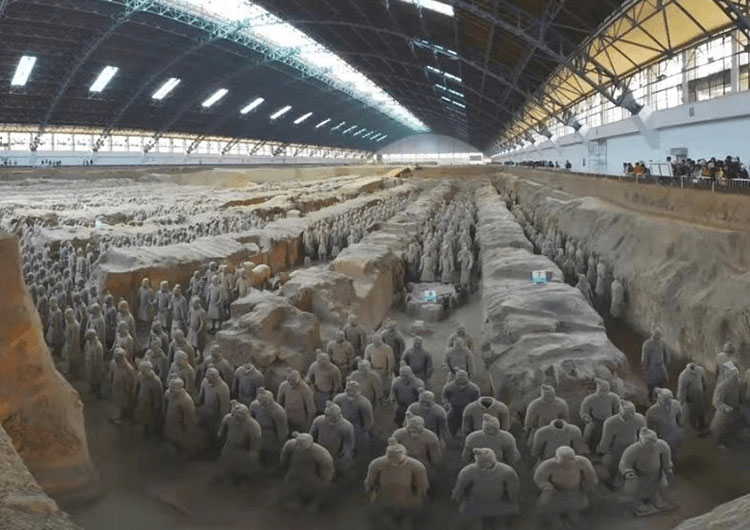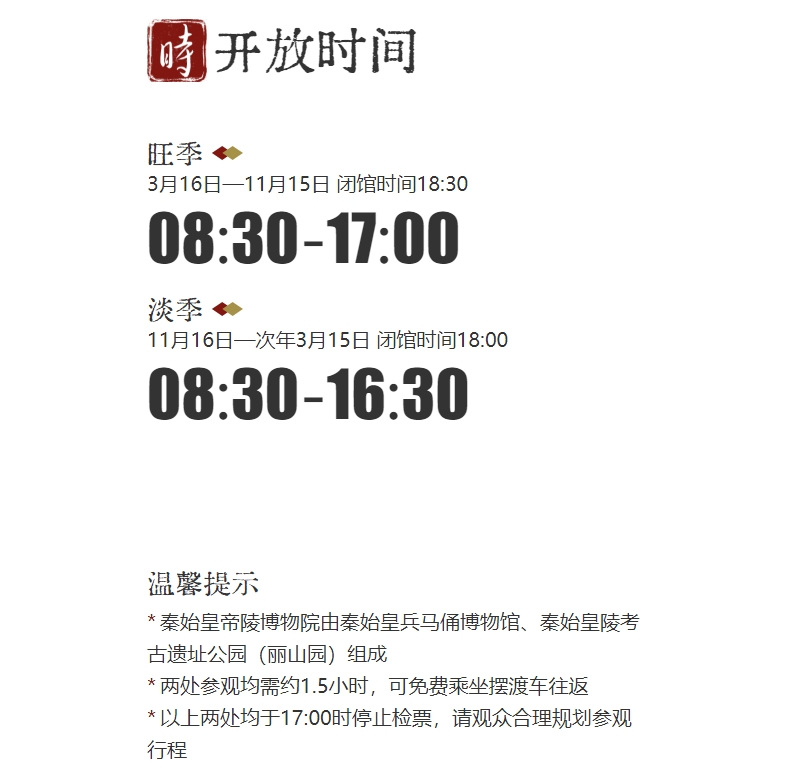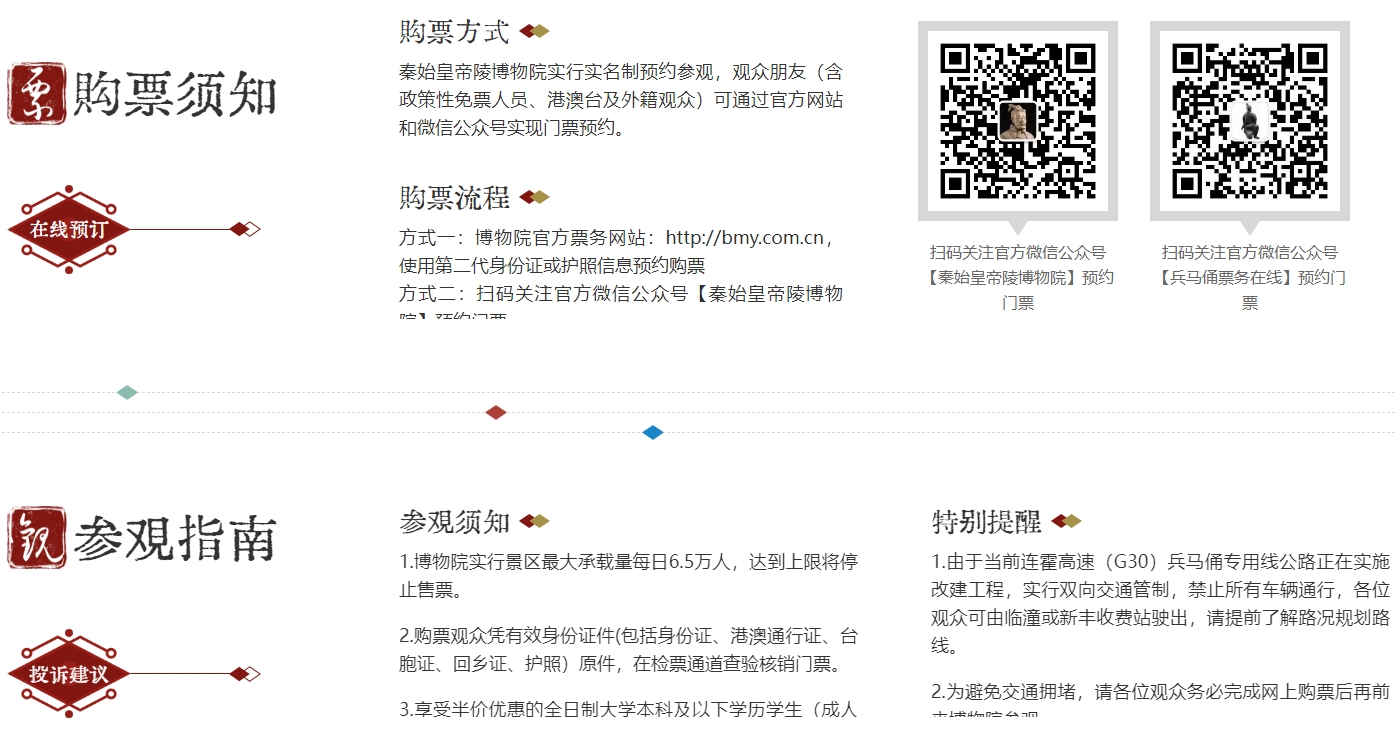
Located in Lintong District, Xi'an City, Shaanxi Province, the Mausoleum Museum of the First Qin Emperor is a large-scale site museum based on the Terracotta Warriors and Horses Museum and relying on the Mausoleum of the First Emperor of the Qin Dynasty (Lishan Park); It is also a public cultural space with the Mausoleum of the First Qin Emperor and its many burial pits as the main body, based on the protection and display of the archaeological site itself and its environment, integrating education, scientific research, sightseeing, leisure and other functions. In 2007, the Mausoleum Museum of Qin Shi Huang was awarded the first batch of national AAAAA tourist attractions, including the Terracotta Warriors and Horses Museum and Lishan Garden. The two attractions are 2,200 meters apart, and visitors can take a free tour bus to and fro.

Overview of the Mausoleum of the First Qin Emperor
The Mausoleum of the First Qin Emperor is located in the two administrative villages of Qin Warriors Village and Maojia Village of the Qinling Street Office in Lintong District, Xi'an City, Shaanxi Province, and is about 5 kilometers away from the seat of the Lintong District Government in the east. It is backed by the mountain, overlooking the Wei River, the Mausoleum of Qin Shi Huang is the commanding height in the cemetery, it is like a hill, after two thousand years of vicissitudes and the majestic posture does not change, in the tombs of the emperors of the Chinese dynasties with its grand scale, rich burials and famous in the world.
The Terracotta Warriors and Horses, also referred to as the Terracotta Warriors or Qin Warriors, are the first batch of national key cultural relics protection units and the first batch of China's world heritage sites, located in the terracotta warriors and horses pit 1.5 kilometers east of the Mausoleum of Qin Shi Huang in Lintong District, Xi'an City, Shaanxi Province.
Terracotta warriors and horses are a category of ancient tomb sculpture. In ancient times, human martyrdom was practiced, and the slave was an accessory of the slave owner during his lifetime, and the slave should be used as a burial object for the slave owner to be buried after the death of the slave owner. Terracotta warriors and horses are funerary objects made in the shape of terracotta horses (chariots, war horses, soldiers).
On March 4, 1961, the Mausoleum of Qin Shi Huang was announced by the State Council as the first batch of national key cultural relics protection units. In March 1974, the Terracotta Warriors were discovered. In 1987, the Mausoleum of Qin Shi Huang and the Terracotta Warriors and Horses Pit were approved by UNESCO to be included in the "World Heritage List", known as the "Eighth Wonder of the World", and have been visited by more than 200 foreign heads of state and government, becoming a golden business card of China's glorious civilization in China, and is also known as one of the world's top ten ancient tombs and rare treasures.











